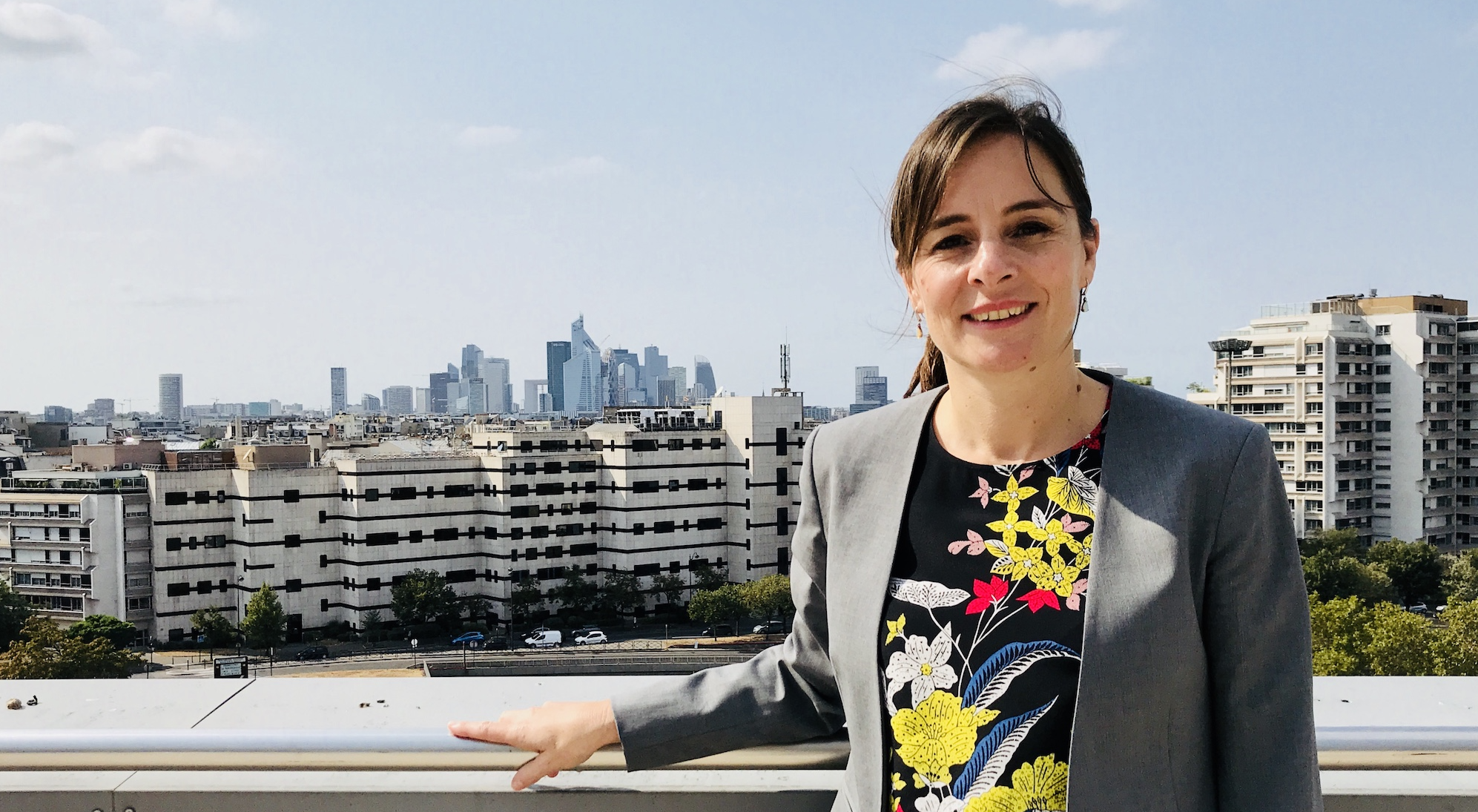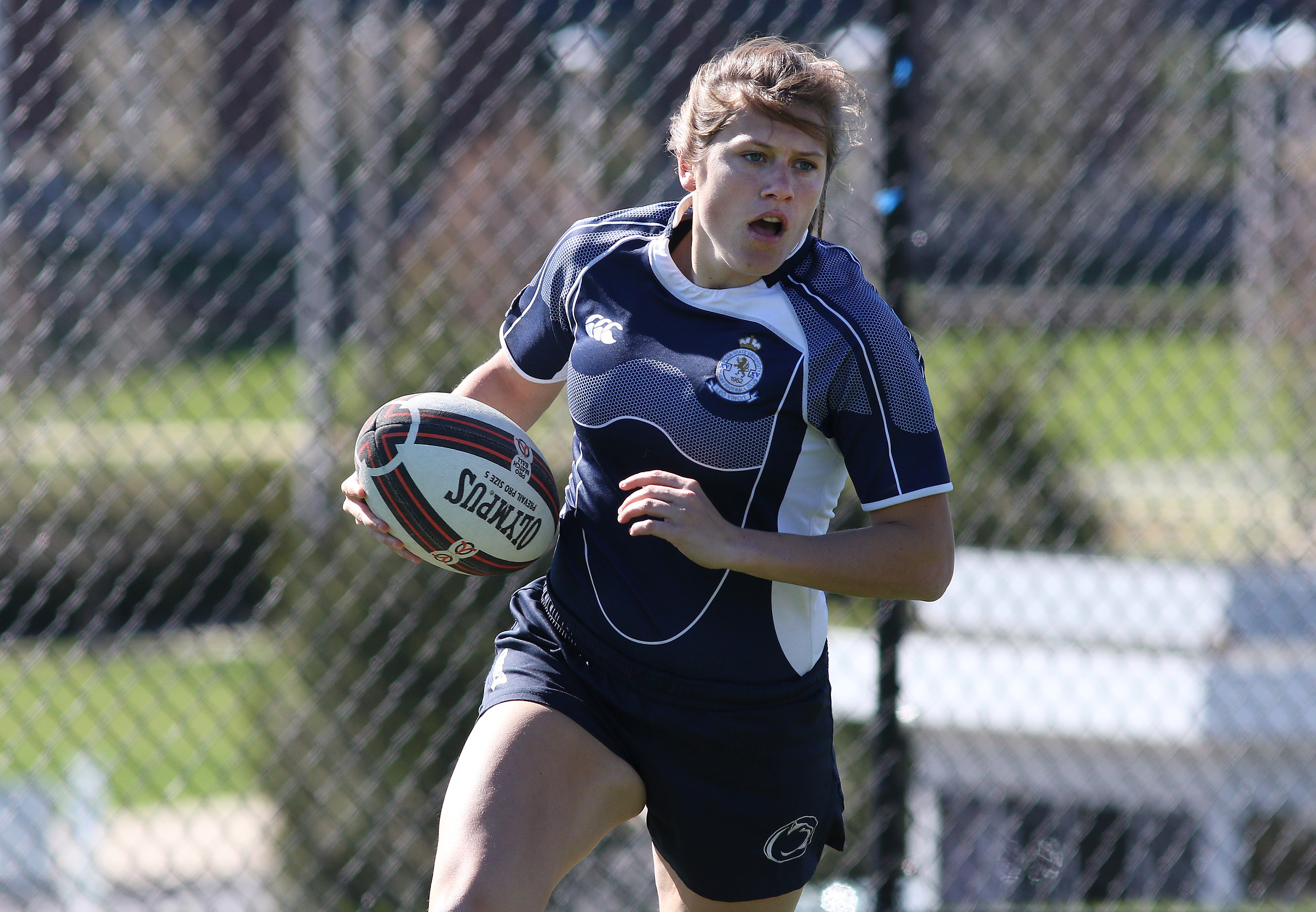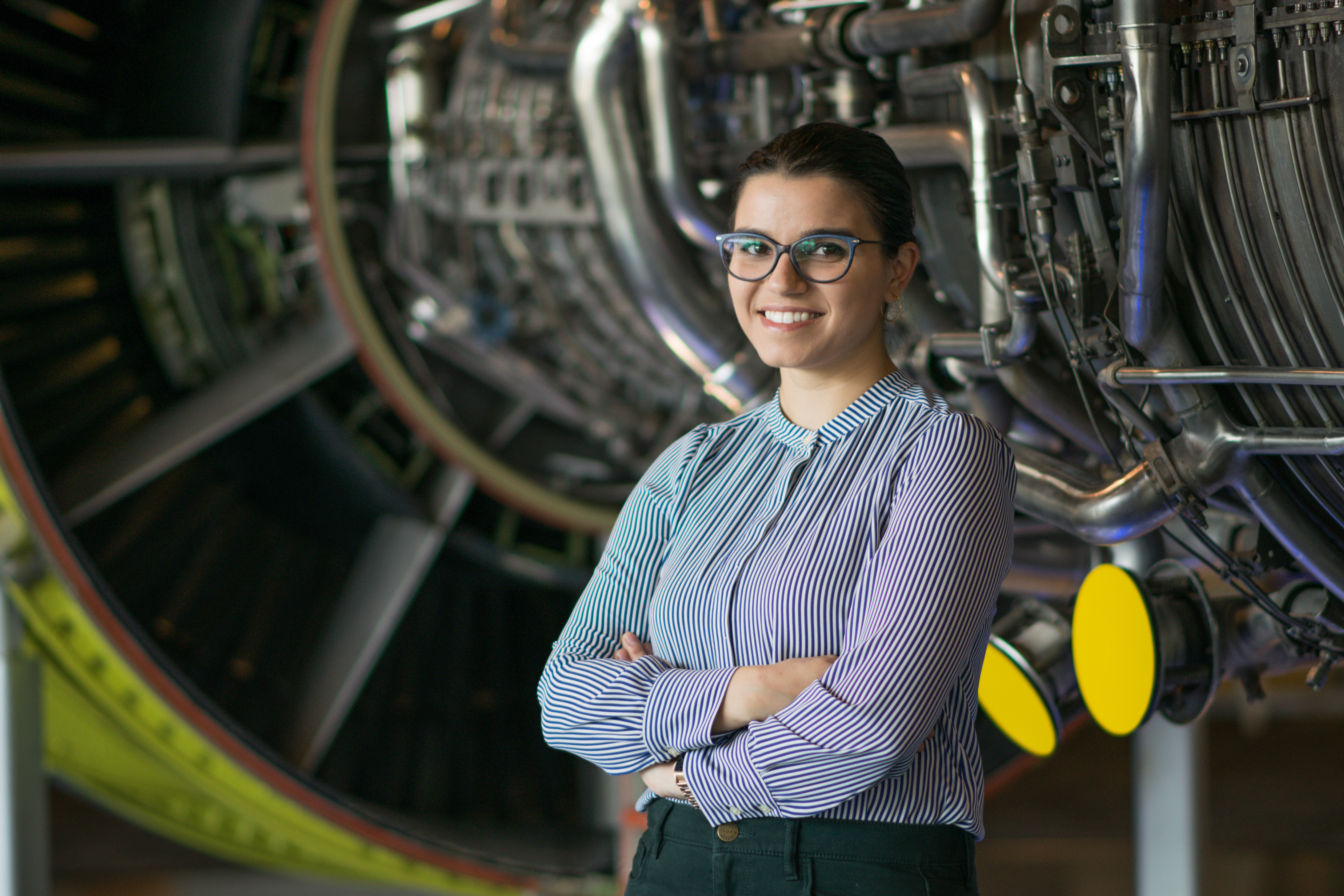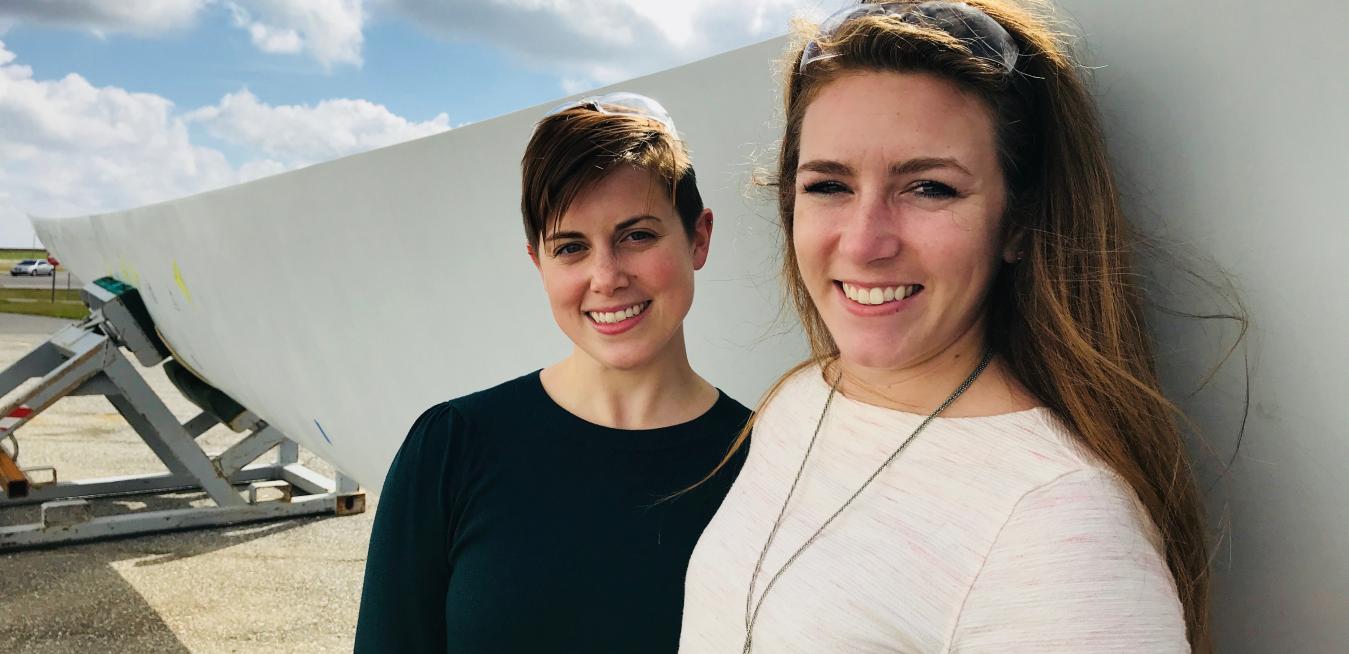These questions, no doubt, will prompt many tweens to roll their eyes, wondering: How will calculating a bunch of boring math problems or writing code lead to anything cool? But for once, the kids have got it all wrong. Turns out STEM programs offer creative stuff like finding ways to save coral reefs for Australia or designing blankets to treat jaundiced newborns. And those kinds of activities lead to careers adventurous enough to make even Minecraft seem boring. Over the last year, we’ve met with five women employed by GE whose jobs have enabled them to break turbine blades to make them better, 3D-print metal parts for jet engines, write software to catch more wind while chasing an Olympic dream, and try to predict the future — all because of their STEM training. Here’s how they did it:
The Wind (Blade) Breakers: Kristen Hanrahan and Claire Stortstrom
https://www.facebook.com/GE/videos/vb.138602119541424/1417578145073716/?type=2&theater
On paper, Kristen Hanrahan and Claire Stortstrom’s jobs at LM Wind Power, a unit of GE Renewable Energy, sound straightforward enough: test the strength and resilience of wind blades, including those used in the world’s largest onshore turbine, the Cypress. Yet what they actually do at the Technology Center for the Americas (TCA), a New Orleans-based research facility, is anything but ordinary.
Hanrahan designs manufacturing processes to create sturdy wind blades. Then Stortstrom comes in to destroy those prototypes, slicing them with a guillotine-like machine and prying them apart with steel jaws. “We break a lot of things to make them better,” she says. Their goal is to ensure that each of the company’s blades will be able to withstand everything from frigid gales near the Arctic Circle to hot desert wind in Oman.
Both women attended Tulane University, which launched several programs in the aftermath of Hurricane Katrina that blended classical engineering disciplines with science. After earning engineering degrees, they landed positions at the nearby TCA, which just so happens to be located on a NASA campus. “I thought, ‘I can stay in New Orleans, I can learn things I don’t know about and kind of feel my way through,’” says Stortstrom. “It worked out very well.”
The Soothsayer: Vera Silva
 As chief technology officer for GE Renewable Energy’s Grid Solutions unit, Silva leads a team specializing in innovative ideas for keeping the lights on more efficiently. Image credit: Tomas Kellner for GE Reports.
As chief technology officer for GE Renewable Energy’s Grid Solutions unit, Silva leads a team specializing in innovative ideas for keeping the lights on more efficiently. Image credit: Tomas Kellner for GE Reports.As a small child in Portugal, Vera Silva demanded her grandfather explain precisely why her town was subject to frequent power outages. “He took me to visit the turbines and the generators [at a hydropower plant], and he explained the engineering around it,” she says. Now, like her grandfather, part of Silva’s job is to explain how future power plants and electrical grids will work.
Silva knows her stuff. With a Ph.D. in electrical engineering, she has written four books and over 40 scientific papers and won three awards for her contributions in integrating renewable energy into the power system. She is also the chief technology officer for GE Renewable Energy’s Grid Solutions unit, leading a team of 3,600 engineers in 17 countries, who specialize in coming up with new and innovative plans for keeping the lights on more efficiently.
In Paris last year for the world’s largest power transmission conference, Silva shared some of her most exciting predictions. For instance, power generation will take place closer to home — as in, within people’s homes. Neighbors can share batteries that store locally collected energy, or pool solar energy coming from the roofs of individual homes. Silva also expects digital technology to revolutionize the way electrical companies operate the grid, making power more predictable and reliable. Six-year-old Silva would certainly appreciate that bit of news.
The Playmaker: Amanda Berta
 Amanda Berta thought she'd have to give up rugby and focus on renewables. Her supervisor said: Why not both? Image credit: Craig Houtz.
Amanda Berta thought she'd have to give up rugby and focus on renewables. Her supervisor said: Why not both? Image credit: Craig Houtz.As a college student, Amanda Berta harbored two mammoth-sized dreams: become a world-class rugby player and save the world. “I am basically a hippie who’s good at math,” says Berta, whose fascination with all things environmental prompted her to earn a degree in energy engineering from Pennsylvania State University in 2017. Though she played competitive sports her entire life, Berta assumed college rugby marked the end of her athletic career. So when she was accepted to GE’s Renewable Energy Development Program, which provided hands-on training by rotating people through jobs at sites in Florida, Oregon and Illinois, Berta hung up her cleats to focus on energy.
Or so she thought. A few months later, Berta received a rare opportunity to play provisionally for the U.S. women’s rugby team. This put her in an enviable pickle: rugby or renewables? Luckily, her supervisor Sheri Hickok figured out a way for Berta to do both. Hickok found a part-time spot for the aspiring athlete in a new initiative known as Digital League. Now, as Berta works day and night to stay in rugby form and keep the wind turbines spinning, she has another wish: more hours in the day.
The Mold Buster: Stefka Petkova
 Stefka Petkova is working of 3D printed parts for the GE9X, the world's largest and most powerful jet engine. Image credit: Stefka Petkova.
Stefka Petkova is working of 3D printed parts for the GE9X, the world's largest and most powerful jet engine. Image credit: Stefka Petkova.When Stefka Petkova attended North Florida University, she drove to Cocoa Beach with her school’s space club to watch the launch of the Space Shuttle Atlantis in 2011. “It was an amazing experience,” she remembers.
Now Petkova, who studied mechanical engineering, is charting another new course in science and technology: the world of 3D printing. Petkova first learned about the new manufacturing method in 2014, when she moved to GE Aviation headquarters in Cincinnati and heard about the company’s first 3D-printed jet engine parts. She was instantly smitten with the elegant process of fusing together thin layers of metal powder with a laser or electron beam.
Since then, she joined the GE Aviation team developing 3D-printed parts for the world’s largest jet engine, the GE9X. Thanks in part to Petkova’s work, the new design is 10% more fuel-efficient than its predecessor and its new components are shaped in ways that were once impossible to manufacture. Talk about breaking the mold.
Top image: Stortstrom (left) and Hanrahan are working on new ways to make the next generation of wind turbines. Image credit: Tomas Kellner for GE Reports.





